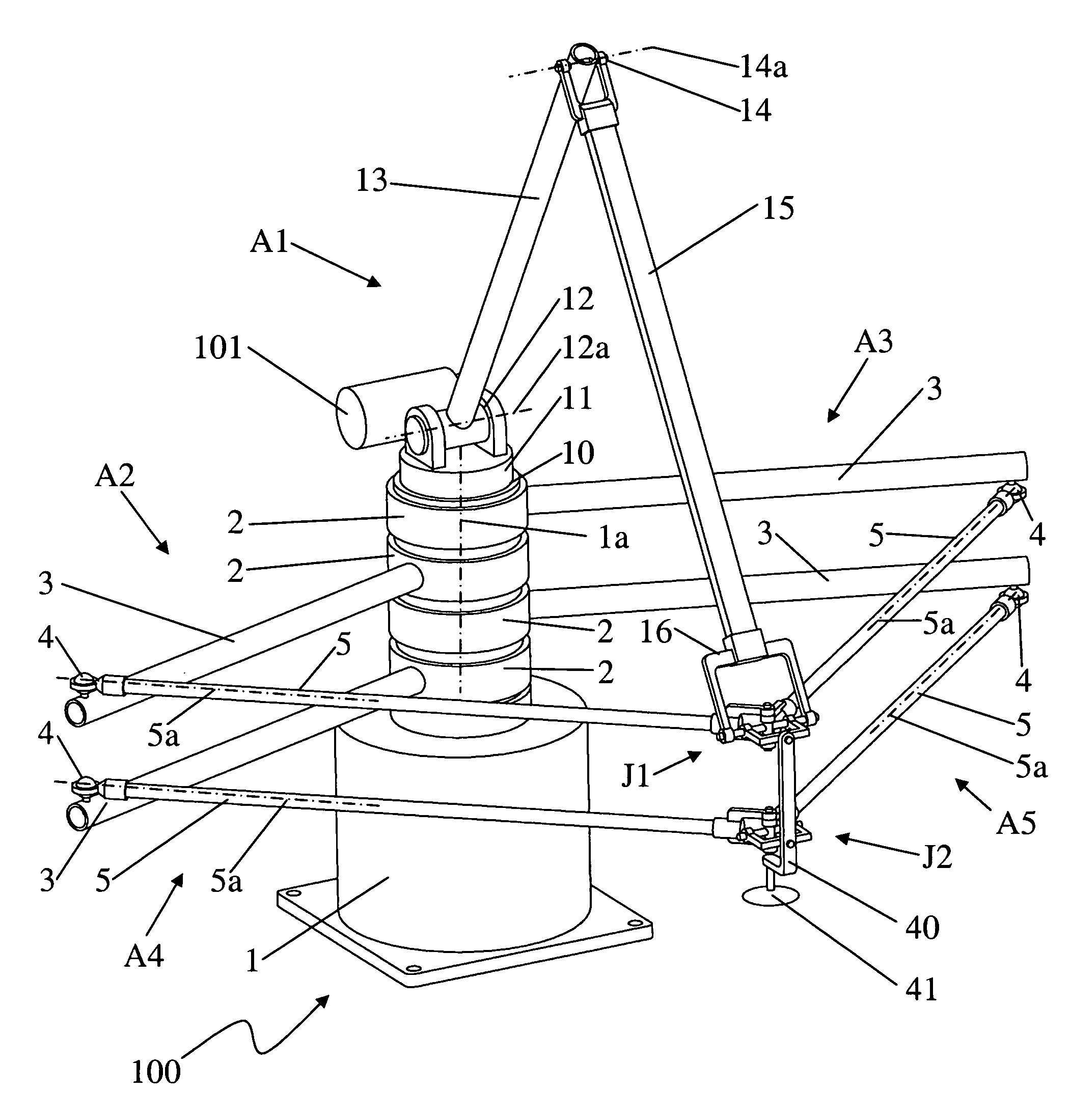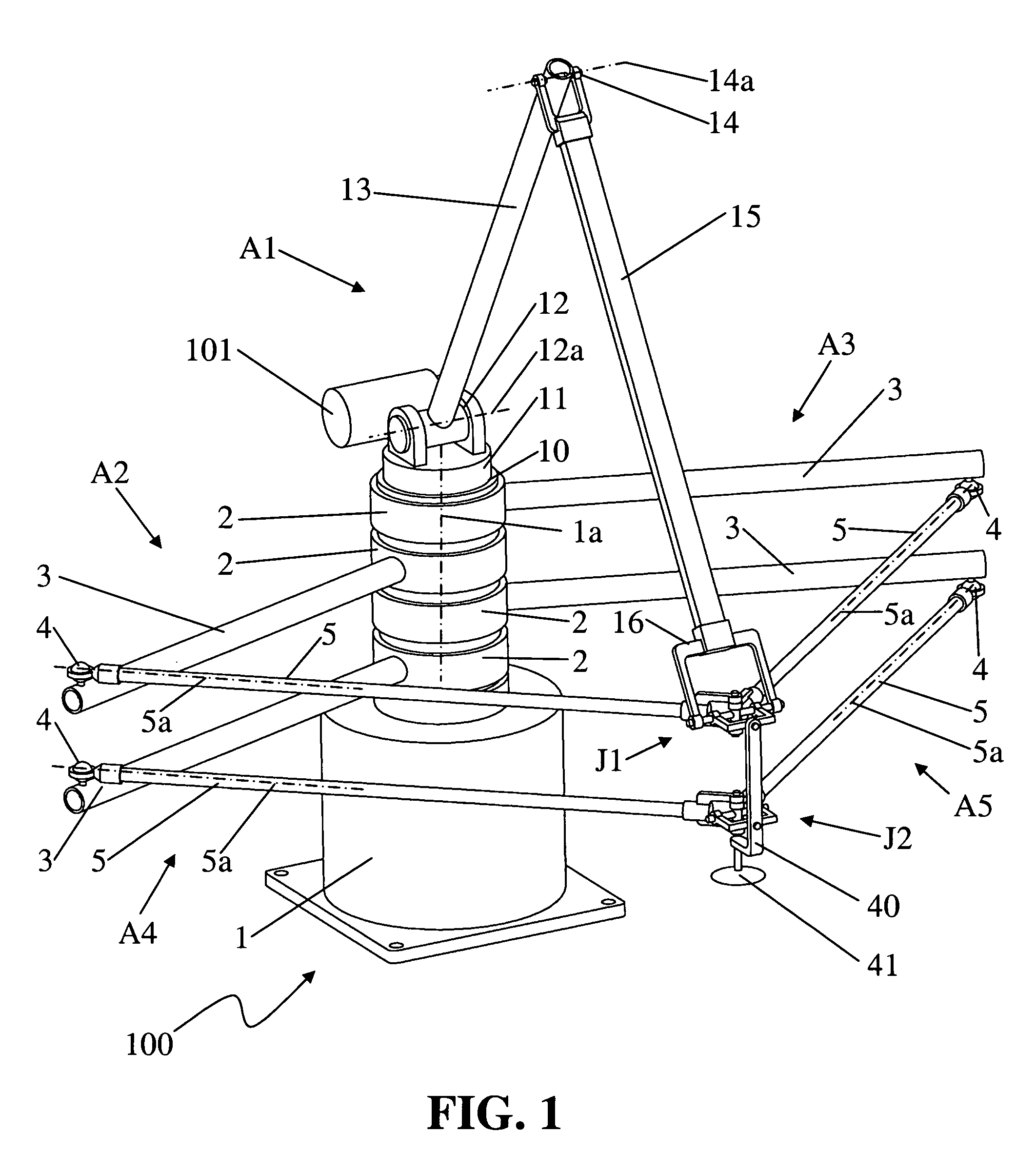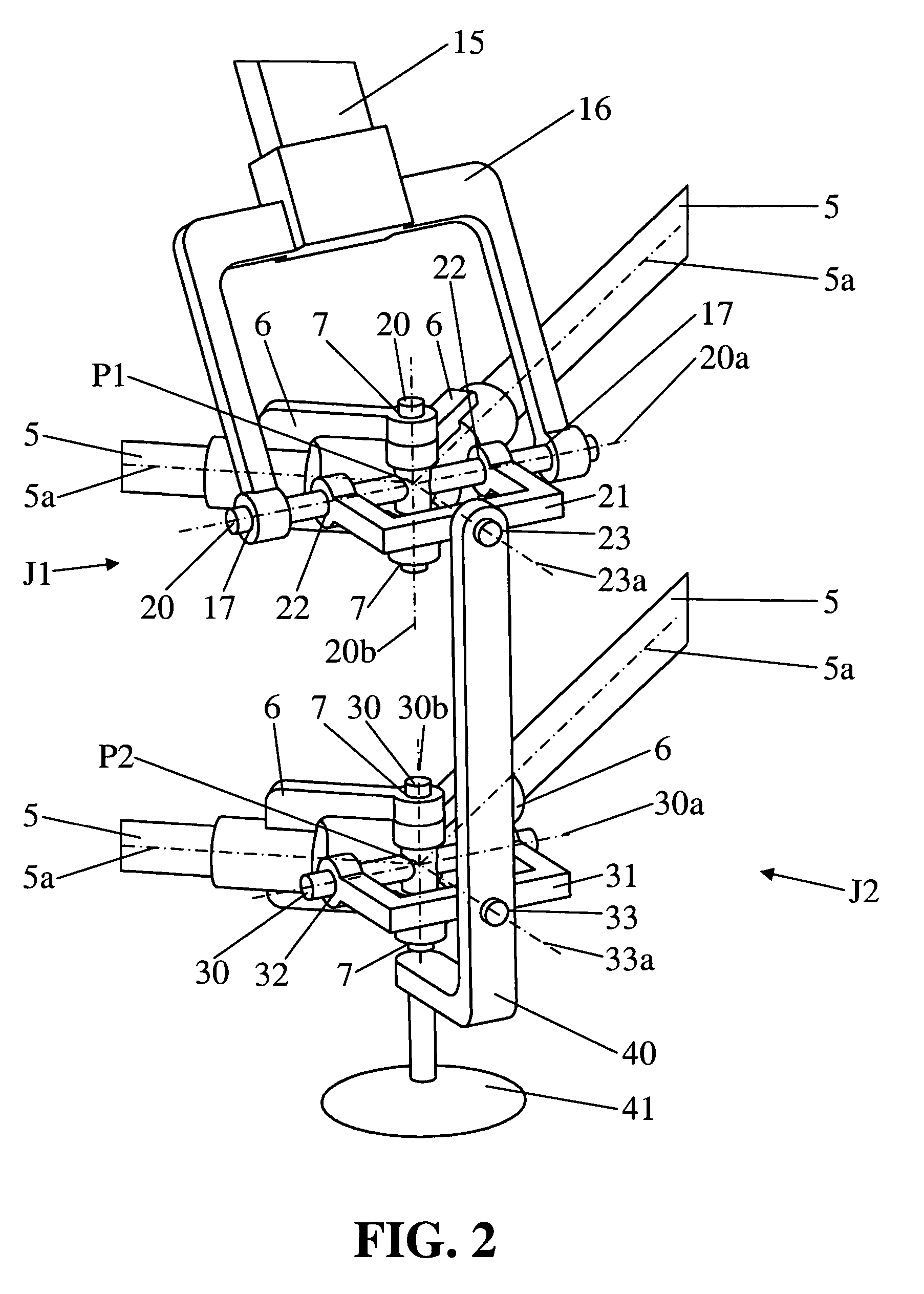Parallel kinematics mechanism with a concentric spherical joint
- Summary
- Abstract
- Description
- Claims
- Application Information
AI Technical Summary
Benefits of technology
Problems solved by technology
Method used
Image
Examples
Embodiment Construction
[0055]Now referring to the drawings, wherein like numerals designate like components, FIG. 1 shows a five-axis parallel kinematics mechanism 100 constructed in accordance with teachings of the present invention. Mechanism 100 includes a fixed base 1 and is operable to position and orient an end component 40 in space relative to the base 1 with five degrees of freedom. The position and orientation of the end component 40 are determined by five actuator limbs A1, A2, A3, A4, and A5, as will be described.
[0056]As illustrated in FIG. 1, mechanism 100 includes a first tetrahedral structure formed by first, second, and third actuator limbs A1, A2, A3. Actuator limb A1 is an actuated elbow-linkage device comprising of a platform 11, a first limb member 13, and a second limb member 15. The platform 11 is movably mounted to the base 1 by a revolute joint 10, allowing free rotation of platform 11 relative to the base 1 about a central axis 1a. Moreover, an actuated revolute joint 12 connects ...
PUM
 Login to View More
Login to View More Abstract
Description
Claims
Application Information
 Login to View More
Login to View More - R&D
- Intellectual Property
- Life Sciences
- Materials
- Tech Scout
- Unparalleled Data Quality
- Higher Quality Content
- 60% Fewer Hallucinations
Browse by: Latest US Patents, China's latest patents, Technical Efficacy Thesaurus, Application Domain, Technology Topic, Popular Technical Reports.
© 2025 PatSnap. All rights reserved.Legal|Privacy policy|Modern Slavery Act Transparency Statement|Sitemap|About US| Contact US: help@patsnap.com



